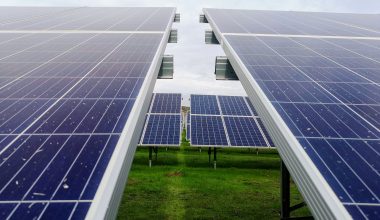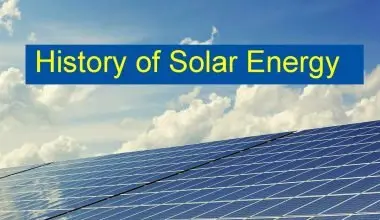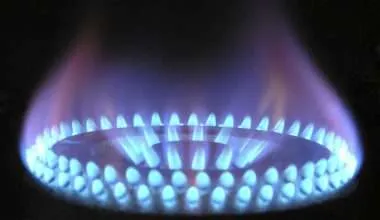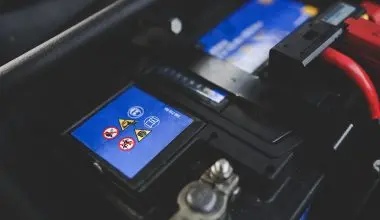Table of Contents Show
The need for energy resources is consistently increasing at a rate which needs our attention. Before the 1970’s the demand was sustainable and stable.
Since then, energy consumption has risen beyond control due to increasing population and demand for a better way of living. We have no doubt crossed the threshold for sustainable use of energy resources. We are using more resources than our planet can provide!
We are depleting our planet so much that we may soon reach an inevitable point of no energy if we keep depending upon non-renewable resources. As of 2017, Earth’s ecosystem couldn’t meet our demands of natural resources.
As we keep increasing our use regularly, this energy debt is increasing significantly.
Navigation:
Non-renewable energy resources vs. Renewable energy resources
- What are Non-renewable energy resources?
- What are Renewable energy resources?
Non-Renewable Energy Resources Examples
Examples of Renewable Energy Sources
Non-renewable energy resources vs. Renewable energy resources
Due to rapidly depleting energy resources and an increasingly high demand for energy, people have started taking measures to protect natural reserves of our planet and to maximize energy efficiency.
This will provide reliable and sustainable energy to the population.
Currently there are two types of energy resources at our disposal; Non-renewable and renewable energy resources.
Let’s learn their definition and understand how they are different.
P.S: Different forms of raw energy found in nature (before being processed by humans) is known as primary energy. It can be both renewable and nonrenewable resource, making an energy mix.
What are Non-renewable energy resources?
Non renewable energy resources are those types which; once used, are reproduced at such a slow rate that is considered negligible due to the fast consumption of these resources.
Let me give you an example. Suppose you have a tank with 1000 liters of water. The tank collects 2 liters of water every day. However, your usage is much higher. Let’s say 20 liters.
This way, you’re using 18 liters more than you should, hence going in debt. However, because the reserve is plenty, you won’t feel the need to conserve until it gets finished.
Similarly, we are using non-renewable energy resources at a rate that is insanely higher than it’s rate of production. But because the reserve of nonrenewable energy source is huge, humans consider it to be infinite.
Hence, a Non renewable energy source should be used at a very limited rate and with good efficiency to prevent depletion of stock.
Non-Renewable source of energy are also known as Conventional sources or Traditional energy sources.
What are Renewable energy resources?
In contrast, renewable energy resources are regenerated naturally over time.
The rate of consumption of these sources does not affect the rate at which they replenish. This is why they are gaining wide-spread popularity due to their sustainable nature.
Renewable energy sources have an added advantage of producing minimum pollution or greenhouse gas emissions. This is another driving force for increasing demand of clean energy.
Renewable sources of energy are sometimes known as non-conventional sources of energy or as an alternative energy source.
Here we will list down 20 examples of non-renewable and renewable energy resources currently being used in the world.
Non-Renewable Energy Resources Examples
1. Coal
Coal is one of the most widely used fossil fuels and a primary energy source.
It consists of carbon-rich material which was formed by swamps and plant material covered with water that later dried out giving rise to sedimentary material.
The dead plant material present in the sediments is decayed and converted into organic material known as peat over an extended period of thousands of years.
Peat converts to coal when it is pressed by immense pressure and heat produced by deep burial of new layers over millions of years.
Coal can be used to produce various synthetic compounds. For example, it can be used in production of coke. Coke is made through destructive distillation of coal by heating it at 1000 degrees Celsius in the absence of air.
It is also used for electricity generation using steam. The steam formed from boiling huge quantities of water turns large turbines which relay energy to generators to produce electricity.
The energy in coal comes from the chemical energy between hydrocarbon and oxygen bonds. These break to release high levels of thermal energy.
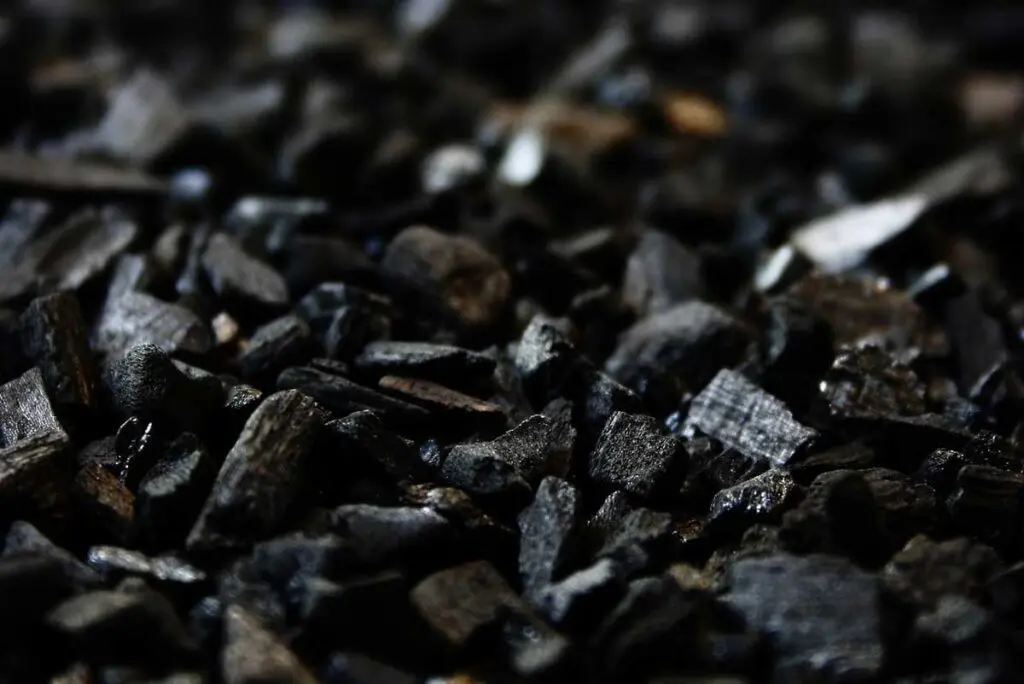
Coal is considered as non-renewable resource because we can’t replicate the environment (Very high temperature and pressure) in which it was initially formed.
Plus, it takes millions of years for it to be produced in the first place!
According to many studies, if the rate of current coal consumption continues in a similar manner, there’s a high chance that the worldwide stock of coal may be depleted completely in the next 150-200 years.
Hence, it is very important not to solely rely on coal as an energy resource anymore.
2. Oil
Oil is one of the most common non-renewable energy resources. It is also a primary energy source along with coal.
Read more: Why is oil a Non-renewable resource?
Oil is a liquid fossil fuel extracted from the earth in the form of ‘crude oil’. It is then separated into many different types of oil (like diesel) through the process of fractional distillation.
Every type of oil has different types of functions. For example, petrol is used to run our automobiles and cooking oil is used for cooking purposes.
The issue of oil is very similar to coal, the reserves are depleting at a rate at which it is almost impossible to replenish them. This means our mother earth could be out of oil very soon too!
3. Natural Gas
Natural gas is another type of fossil fuel. It is formed by organic matter from dead remains of tiny marine organisms, deposited into the ocean floor 300 million years ago.
Over the years, the layers of rock above the deposits became thousands of feet thicker. These layers built up pressure over the energy-rich organic matter.
This pressure and added underground heat converted the organic mix into oil and natural gas. The natural gas gets trapped in between layers of rock and in holes of porous rocks (like a wet sponge).
Further Reading: Why is Natural Gas non-renewable?
Companies drill down as much as 10,000 feat to find these reserves. After extraction, natural gas is sent for refining. Here it is separated from other components of natural gas.
90% of natural gas consists of methane – a greenhouse gas. Other constituents include Liquefied Petroleum gas (LPG), Ethane, Butane, Propane, Sulfide and Water.
4. Peat
Peat is another commonly used fossil fuel. In addition to being used as a fuel, it is also used in the horticulture industry and potting.
It is a naturally-occurring organic matter which is soft and pitted with minerals.
Peat takes thousands of years to form and its high rate of consumption also makes it a non-renewable energy resource.
Some countries like Indonesia preserve peat lands as they are considered a very important part of our natural ecosystem. Conserving peat lands is also a solution to global warming!
5. Sand
After air and water, Sand is the third most commonly used natural resource.
Unfortunately, Sand is also non-renewable.
Sand consists of a combination of different rock sediments and minerals which are broken down into tiny pieces.
Sand is extracted to make glass, carry out oil explorations and for land reclamation. Sand is also widely used in construction. Nearly every constructed building, landmark or monument has some quantity of sand in its composition.
Urban development is not stopping anytime soon and neither will the demand for sand. Therefore, we must consider sustainable use of this resource before it runs out.
Alternatively, sustainable building materials are also being worked upon.
6. Uranium
Although it is very much true that nuclear energy is a form of renewable energy resource; Uranium (the material which makes nuclear energy) and powers nuclear reactors is not.
Uranium is a radioactive element and the most commonly used material when it comes to nuclear energy.
The commonly used Uranium isotopes are uranium-235 and uranium-238 while most nuclear power plants use only uranium-235.
Read Further: 20 Interesting Facts about nuclear energy.
It is of cosmic origin since its isotopes were formed in supernovas billions of years ago.
Extensive mining throughout the world is carried out to extract uranium isotopes from its ore. Currently, we have only 200 years of uranium supply left before it runs out.
7. Gold
A precious metal which is a symbol of power and wealthy ever since it came into existence.
Similar to Uranium, it is also of cosmic origin as it was formed through the collision of neutron stars.
Nowadays, about 2,700 tons of gold is mined each year. That’s 2.7 Million Kilos!

Other than gold being used as a luxury item, it has widely been used in the tech world to manufacture computer chips, mobile phones and other devices.
Over the recent years, gold is also being used in the pharmaceutical industry for treatment of arthritis and tuberculosis and is considered as a possible cure for cancer.
Gold is also being used as a catalyst to make solar fuels. This to defeat unreliability of solar panels.
The dependence on gold has led to gradual thinning of gold stocks in nature. It’s only a matter of time when we reach the final reserves.
Most recently, Turkey became the largest gold buyer, overtaking Russia, when it bought 148 tons of gold over the first-half of 2020.
Just imagine how much more gold would be mined to fulfill the heightened demand.
8. Aluminum
Aluminum is one of the most common elements found in the earth’s crust. It is primarily found in the form of Bauxite ore which is chemically processed to make it’s metal form.
Since bauxite ore is limited, Aluminum metal is considered to be a non-renewable resource.
Aluminum plays an integral part in our life; being used in packaging, manufacturing automobile parts, airplanes and much more. The wide variety of aluminum uses comes from it’s versatile nature.
Ever wondered how planes are light enough to fly? Think Aluminum.
The demand for aluminum has drastically grown over the years. However, its use and exploitation started late in the 19th century.
Aluminum has a distinct advantage as compared to other natural resources. It can be fully recycled without losing its original quality in the process.
Hence, the recycling industry has extensively recycled aluminum to meet its demand.
Further Reading: How is Aluminum recycled?
9. Iron
The metal is found in the earth’s core, stars and on the sun.
Iron is even found in our blood (Not like it exists in the earth, but in the form of minerals). However, since it cannot be replenished naturally, it is unfortunately considered a non-renewable energy resource.
Throughout history, we have made diverse materials from iron like dishes, swords, blades and other daily-use items.
Iron is used to make stainless steel which can form various cutting and non-cutting instruments. Make your way to the kitchen, you’ll find most of the utensils are made of iron.
Iron is also the main element which forms hemoglobin. A compound that carries oxygen around our body. Iron tablets can be taken by iron-deficient patients to treat anemia, and to generally supplement the body as well.
Iron is very abundant in the earth’s crust and some even suggest that most of the earth’s crust is made of iron. Meteors falling on the earth also contain high amounts of iron as a common element.
10. Phosphate Rock
Phosphate rock is the main source of producing Phosphorous. It’s an essential nutrient used in fertilizers for agriculture.
Phosphates are an irreplaceable resource for our planet. Without adequate phosphate nutrients in the soil, plants will simply not grow.
This is because plants won’t be able to carry out photosynthesis; An important process in plant growth.
85% of mined phosphate rock is used in the fertilizer industry. The rest is used to form various other supplements and feed for livestock.
Our skeletal system requires a good amount of calcium and phosphate for good bone development and maturation. Without adequate phosphate in our body, we may face health issues like skeletal deformities and stunted growth in children.
The stocks of phosphate rock are declining. If the resource is not sustained efficiently, we might seriously undermine our ability to properly feed the population.
11. Rare earth elements
Modern science stands on rare earth elements. Their diverse properties and characteristics have helped science to develop various electronic devices we see today.
Rare earth elements are used to make electric vehicles, laptops, mobile phones, TVs and other devices on which our social society heavily depends upon.
These elements are found scattered in the earth’s crust. Just like gold and uranium, they are also of cosmic origin.
Hence, they cannot be considered renewable even though they are able to produce clean energy (emission-free).
We must use this resource with proper care and efficiency. Although, there is currently no shortage of rare earth elements, they are only available to use in a finite amount.
Enough about Non-renewable sources of energy, why don’t we head on to know more about renewable sources of energy now!
Examples of Renewable Resources of Energy
1. Solar Energy
Solar energy involves harnessing the light from the sun’s solar radiation and converting it into renewable electricity. That electricity can be used to power our homes, vehicles and even industries.
People are readily installing solar panels on the roofs of their houses to produce emission-free electricity. Car manufactures are offering solar panel roofs on electric cars to power those vehicles.
Solar industry has developed to the extent that there are ways to store solar energy without batteries!
We would not ever deplete this energy completely, even if we captured all of it at once. This is because the sun will keep on sending us more solar power until it doesn’t exist.
As indicated by research, the earth receives a huge amount of solar energy from the sun, 173 trillion Terawatts to be explicit. That is actually ten thousand times more power than what the whole world’s population uses.
Solar energy has come a long way in history. Here’s a timeline of how solar developed to what it is today.
Further Reading: Solar Energy; An overview
We’ve got quite a bit of reading material on Solar Energy, you can go ahead and read it by searching ‘solar’ on the top right corner!
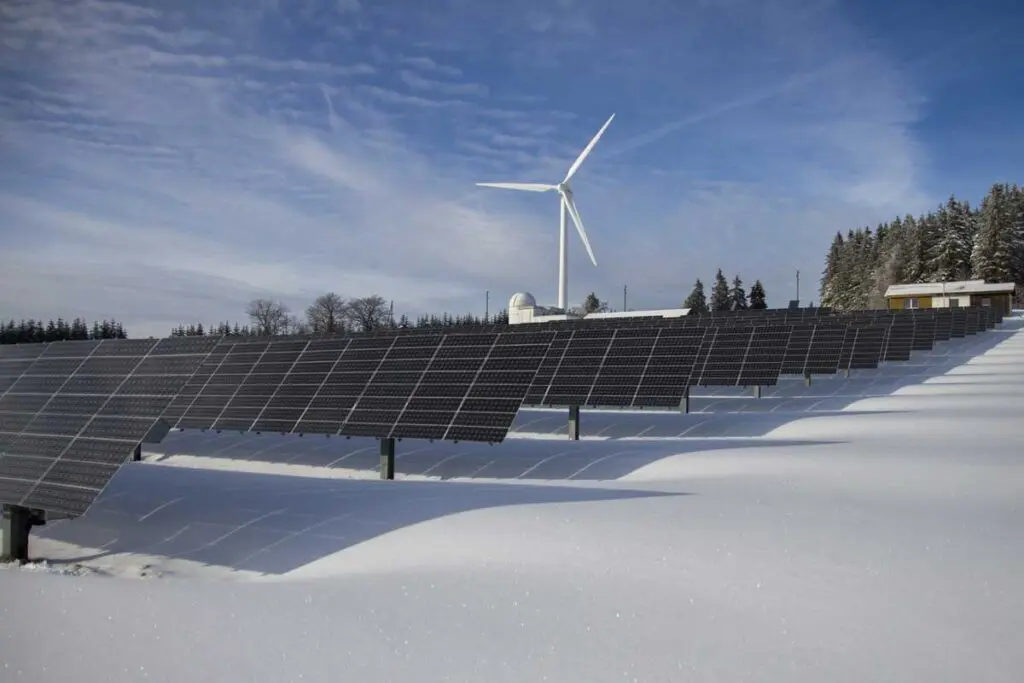
2. Wind Energy
Wind Energy is among the first renewable resources of energy. Wind energy started gaining popularity to improve our living conditions and not be harmful to the environment at the same time (a clean source of energy).
Wind basically moves air from an area of high pressure to an area of low pressure.
This movement (Kinetic energy of Wind) rotates the blades of the turbine.
Rotation of the wind turbine generates kinetic energy which is relayed to a generator. The generator then converts this kinetic energy to electrical energy. Read more about How a wind turbine generates electricity.
Many wind turbines working together as a group are known as wind farms.
We have become highly advanced in wind power technology, with efficiencies as high as 50%. We’ve even developed blade-less wind turbines!
Decades ago, you must remember how there were windmills present in small villages on the countryside. These windmills were one of the old ways of how wind power was harnessed to make use of it. The only difference is that windmills convert wind energy to mechanical energy, rather than electricity.
That mechanical energy was used to grind corn or wheat to make flour for the family.
Even today, some of these can be found across small villages in Holland.
As long as our planet exists and the winds keep on blowing, we will be able to harvest the electrical energy produced using wind power.
3. Water
All of us know the immense value of water. It is impossible to replace water from our lives!
70% of our body is made up of water. Similarly, most of our planet consists of water. Water is found in rivers, lakes, oceans and seas throughout the planet. Not surprisingly, it also has a huge potential for generating electricity.
We utilize energy in the form of Hydro-electric power, tidal power and wave energy, which are all various forms of moving water.
It’s the kinetic energy in the movement of water which makes water a source of renewable energy.
Did you know? The largest hydropower plant in United States is installed on the Columbia river in Washington. Two-thirds of Washington’s electricity comes from hydropower.
It is however argued, that if water should be considered a renewable or a non-renewable energy source. This is because we cannot produce water, and if it becomes toxic or is misused, then it cannot be used again.
At least for now, Water is considered a renewable source of hydro-electric energy.

Most recently (Friday, 13/12/20); Canada issued permits to a Scottish tidal energy business company to build a Tidal power plant in the Bay of Fundy, Nova Scotia.
The company plans to install 15 tidal steam turbines by the year 2023. These will generate 1.5 Megawatts of Electricity, which could power at least 600 homes!
Further Reading
4. Geothermal Energy
The heat produced by the earth’s core is extremely high. So much that it radiates onto the earth’s surface. This phenomenon is known as geothermal energy.
There is huge potential to harvest this energy in areas where the heat of the earth can reach the outer surface of the earth (that is, to the ground) such as places where the crust of the earth is thinner.
This is usually accomplished through thermal power plants. Harnessing geothermal energy does have its pros and cons. Did you know they have 400% efficiency?
Geothermal energy is available to us in the form of hot springs, steam vents or volcanic lava and can be harnessed as long as the earth’s core stays hot.
Since the heat energy inside the core of the earth is not going away anytime soon, neither is geothermal energy. Hence, it is known as an example of renewable source of energy.
5. Air
Air contains valuable compounds necessary for our survival.
One of the most important elements is oxygen. It is produced by plants through photosynthesis and utilized by humans, animals and other various organisms to carry out aerobic respiration.
It is also the major reactant in combustion of various fossil fuels to produce energy.
Remember, Carbon Dioxide in limited quantities is also a requirement since plants need Carbon Dioxide to execute photosynthesis.
Air is a very important energy resource for us.
Even after being contaminated by various industrial process and other forms of air pollution; it has the ability to replenish itself. This is only possible by constant production of oxygen and use of carbon dioxide by plants.
Sometimes one can’t realize the extent of air pollution that is happening because it dilutes into the large volumes of air in the world.
However, we have scientists to tell us how the quality of air has worsened over the years due to human action.
6. Soil
Healthy ecosystems have the ability to replenish soil composition in sustainable ways, making it a renewable energy source.
Even though soils can be replenished with nutrients, the rate at which they do is not as high as the rate at which those nutrients are being depleted.
This means that the depletion is nowhere near being ‘sustainable’.
The good thing is that we are able to solve these problems by applying techniques to make the soil fertile again.
This can be done by various methods like sustainable agriculture and bio-intensive farming.
7. Cultivated plants
All types of plants can be a source of renewable energy.
Plants produced for energy generation and for provision of food are considered a renewable resource. This is because they can be grown again!
However, there are special crops known as ‘energy crops’ that are solely grown to generate energy from them. These crops require much less work and minimal investment.
Examples of energy crops include; Woody plants like Willow and Poplar as well as Herbaceous plants which include species of Elephant Grass (Pennisetum Purpureum and Miscanthus Giganteus).
Woody plants have a higher store of energy due to high carbon content inside them.
The crops are harvested and undergo processing to make solid, liquid or gaseous form of fuels. Examples of such fuels include pellets, bioethanol or biogas. The fuels can then be burned to generate energy just like gas.
We can harvest and cultivate multiple crops in a field and this process can be repeated twice or thrice in a year.
Plants can be used to produce food crops like wheat, corn and sunflower to feed the livestock.
Trees can be planted to make timber. Timber is used to form paper and sometimes burned by off-grid villages to create a source of heat energy.
8. Animals
We breed and produce animals to get our desired products. Livestock farming is used to produce eggs, meat and milk. We take care of their health, cross-breed them and even select the ones to breed further to produce the best livestock.
In this way we are producing a constant number of animal resources to meet the needs of the population. Animals can be a tremendous source of energy for humans.
Needless to say, Animals have been longer on this planet than humans and surely their existence is nowhere near to end.
However, this should not be an excuse for us humans to go out of our way and hunt, or be cruel to animals.
We can say that animals are a renewable source of energy for us but only until it’s sustainable.
If the rate at which we consume animals exceeds their reproduction rate, we are spear-heading for endangerment and extinction.
9. Biofuels
Biofuels are liquefied fuels produced from various biological processes on biomass materials.
Examples of biofuels include biodiesel and ethanol. Biodiesel can be derived from vegetable oil or fat and Ethanol is produced through the process of fermentation.
Biodiesel has slowly gained popularity in the states. The consumption of biodiesel in the year of 2018 was almost 2 Billion Gallons!
Biodiesel fuel has many advantages when comparing to the usual diesel fuel we use in our trucks and tractors. Before anything, let me assure you that diesel engines can be switched to biodiesel fuel without changing engines.
Bio-diesel that is formed properly without impurities is non-toxic and is completely biodegradable. Biodiesel is considered more environment-friendly than conventional diesel due to lower levels of air pollutants.
Ethanol is basically now part of almost all of gasoline sold around the United States.
Usually the concentration of ethanol in petroleum gas is about 10% by volume (Known as E10) which can be used in any of the gasoline-powered engines.
However, the cars that can make use of fuels with higher ethanol concentrations (>10%) are known as Flexible-fuel vehicles.
EPA conducted a research and suggested that vehicles produced later than 2007 can tolerate ethanol levels of more than 15% in petroleum.
However, the higher concentrations of ethanol (51-83%) present in fuels like E-85 can only be used by variable-fuel or Flexible-Fuel vehicles.
10. Biomass Energy
Just now I was talking about how processing of biomass is done to produce biofuels, this is through advanced innovations and technology that has been developed over the years.
Biomass has been used by us for centuries to perform various tasks in our homes.
Biomass is basically the energy produced by burning plant or animals’ organic materials. Even when these organic materials are used as raw materials in industrial processes, they are considered as biomass.
We use four types of Biomass today; Wood and agriculture products (Energy crops), solid waste (manure), Landfill gas and Alcohol-related fuels like ethanol or bio-diesel.
Biomass energy is typically used by off-grid villages to cook food. Of the four types of Biomass; Wood is used the most, accounting for 44 percent of all biomass energy generated nowadays.
Biomass is also renewable as we can simply collect organically derived manure or plant new crops or trees again and extract energy from them.
The best way to obtain energy is through a sustainable process of Afforestation. This way, new trees are planted every time existing trees are cut down to produce biomass energy.
Conclusion
Knowing about all the different sources of energy is essential for you to choose the best source of energy according to your needs.
As the years go by and people realize the effects of climate change and global warming, humans have shifted from non-renewable sources of energy like fossil fuels to renewable sources of energy like solar and wind power.
The part of population using these renewable sources of energy has been increasing significantly over the recent years.
Surely the initial cost of getting the equipment for these projects is high, but renewable energy has shown to be very beneficial in the long-term (both financially as well as environmentally).
What are your thoughts?

